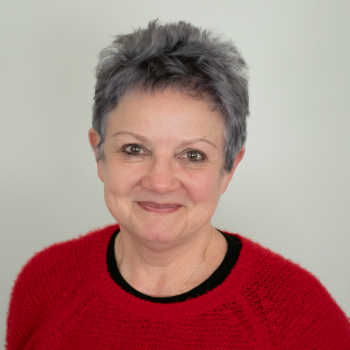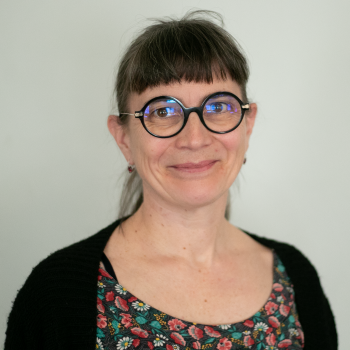Principal Investigators

Andy Y. Shih, PhD ECI Co-Director Associate Professor of Pediatrics, University of Washington Seattle Children’s Research Institute, Center for Developmental Biology and Regenerative Medicine |
 Erik N.T.P. Bakker, PhD Assistant Professor of Biomedical Engineering Amsterdam University Medical Center, Department of Biomedical Engineering In our lab we study brain clearance in rodent models, using two-photon imaging and 7T MRI. We are interested in the anatomy of the glymphatic system, its driving forces, and how it is affected by vascular pathology. This includes hypertension, blood-brain barrier dysfunction, and cerebral amyloid angiopathy. |
 Gabor C. Petzold, MD Professor of Vascular Neurology German Center for Neurodegenerative Disease Bonn |
 Helene Benveniste, MD PhD Executive Committee Member Professor of Anesthesiology Yale School of Medicine, Department of Anesthesiology The Benveniste laboratory studies biology of fluid flows in the central nervous system, mechanisms of cerebral homoeostasis, and glymphatic-lymphatic uncoupling as a mechanism of neurodegenerative diseases. |
 Jeffrey J. Iliff, PhD Professor of Psychiatry and Behavioral Sciences University of Washington, VA Puget Sound Health Care System Our lab focuses on defining the relationships between sleep disruption, glymphatic impairment, and long- term neurodegenerative conditions like Alzheimer’s disease. This includes preclinical work to define the mechanisms underlying sleep-active glymphatic function and its impairment with age and brain injury, as well as postmortem and neuroimaging studies in clinical populations seeking to define the role of glymphatic impairment in human neurological and psychiatric disorders. |
 Matthias J.P. van Osch, PhD European Network Coordinator Executive Committee Member Professor of Experimental Cerebrovascular Imaging Leiden University Medical Center, Department of Radiology The LUMC is dedicated to developing and applying new human MRI technology to improve our understanding of brain clearance and CAA. These techniques are based on high spatial resolution CSF mobility measurements obtained at 7 Tesla, as well as water transport measurements across brain barriers by arterial spin labeling MRI. Moreover, the LUMC has a longstanding history on performing clinical research on Dutch-type and sporadic CAA. |
 Roxana O. Carare, MD PhD Professor of Clinical Neuroanatomy University of Southampton, Southampton General Hospital, Department of Clinical Neurosciences |
 Steven M. Greenberg, MD PhD Professor of Neurology, Harvard Medical School Director Hemorrhagic Stroke Research Program, Massachusetts General Hospital, Department of Neurology Dr. Greenberg’s research focuses on the pathogenesis, diagnosis, and treatment of cerebral small vessel diseases with focus on cerebral amyloid angiopathy (CAA). His work has served as the basis for the Boston Criteria used to diagnose CAA during life, identification of imaging biomarkers to detect disease progression, and treatment trials aimed at reducing its clinical impact. Dr. Greenberg’s research studies involving CAA patients has also made it possible to test hypotheses about the effect of small vessel disease on vascular physiology and functioning of the glymphatic system. |
 Susanne J. van Veluw, PhD North American Network Coordinator Executive Committee Member Associate Professor in Neurology, Harvard Medical School Massachusetts General Hospital, Department of Neurology The translational CAA research lab at MGH uses a combination of ex vivo MRI-guided neuropathology in human brain tissue, real-time optical imaging in mouse models, and in vivo MRI in patients with the goal to unravel disease mechanisms of CAA and CAA-related hemorrhage. With respect to glymphatic brain clearance studies, we are interested in the role of vasomotion as a driving force for perivascular solute transport. |
 Sylvie Lorthois, PhD HDR Directrice de Recherche Institut de Mécanique des Fluides de Toulouse Research in our lab has been mainly focused on the biomechanics of blood flow and transfers (oxygen, nutrients and waste) in the brain micro- circulation of human and rodents, and, more recently, on their interactions with cerebro-spinal fluid flow. We develop an interdisciplinary approach using tools and concepts from fluid mechanics and heterogeneous media physics (including theory, multiscale computational modelling, and microfluidic experiments) to unravel how fluid flow and transport processes in the CNS contribute to major cerebral pathologies, including Cerebral Amyloid Angiopathy. |
 William E. Van Nostrand, PhD Professor of Neuroscience University of Rhode Island, College of Pharmacy My laboratory investigates the molecular pathogenesis of cerebral small vessel diseases with an emphasis on cerebral amyloid angiopathy. To facilitate this, we generate and refine novel rodent models that better reflect human disease. We use these models to elucidate the molecular changes to the cerebral vascular/perivascular compartments that underlie disease. |

